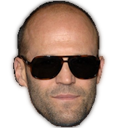
Time is or is not circular depending on how closely we look at it. When we do not notice its passing time is a medium by which we exercise agency; when we concentrate on it for minutes at a time we find that our thoughts come to form loops of small madnesses which preclude the goals that define an agent. If we imagine a very young mind which has existed for only a few hours, we would expect that it would notice that over its lifetime the world has become brighter and the air has become more or less still or dense or wet or hot, in a linear transformation that implies that things will never be the same. But then, this mind finds, over the course of days or weeks, that all of these transformations have been reversed and replayed. When the sky went dark, it was lit up again a few hours later. When the workers laid down their tools on Saturday they hadn’t abolished labour, they had only taken a break at the weekend before resuming work once more. It probably determines that time is cyclical; even if it notices that now in April the world is hotter than when it was born back in February.
We can abandon this mind now: it is old enough to have experienced enough frames of reference and sophisticated enough to extrapolate from those frames that time is both linear and circular depending on which of those reference points it emphasises. When it learns about the seasons, the succession of very similar political parties in power, the ageing of the body, death and reproduction, and the orbit of the moon around the Earth, the Earth around the Sun, and the Sun around the centre of the Milky Way, it may determine that these are all overlapping taxonomies of spiral arms: a superposition of line and circle.
In On Learned Ignorance, Nicholas of Cusa proposes that we imagine a circle, and from that circle a tangent line that extends, as all lines must in mathematics, infinitely across the plane. He supposes we increase the size of the circle and watch as the thing grows at how the curves that fall away from the line and that join up to form the circle grow less steep. The point at which they reunite becomes more and more remote from the line, and the curves that depart from the line begin to do so more slowly; the circle continues to grow, and the curves become more and more shallow.
For Nicholas, this is a symbol of the divine: we must by a leap of faith extrapolate from this process of growth that the circle could become infinitely large, which has the dual effect of uniting the circle with the line in complete identity and making the circle or the line invisible, as one completely overlaps the other. Oneness swallows up all of the geometry. There is no sense in which this growth can ever qualitatively make transformations of this kind, demanded by the leap of faith, except by a contrivance alien to Euclidean geometry: frame of reference. The phenomenon of the circle that expands into a fixed reference point is visually identical to one in which the circle is static but continuously zoomed into. In both cases, the circle more and more exceeds our field of view, and the only possible description of this change must be in terms of the change in relation between the shapes and our perspective of them. If our point of reference could become infinitesimally limited, anything with finite, non-zero extensity would be qualitatively indistinguishable from something infinite.
Time Is Not a Line
Wonky Circles and Infinity
The Absurdity of a Net